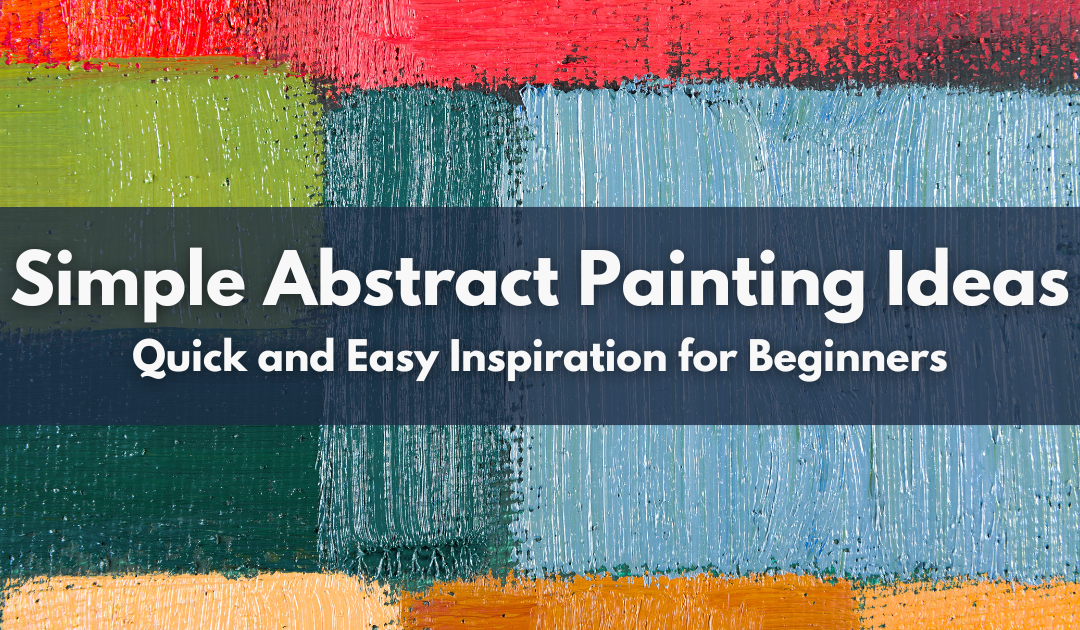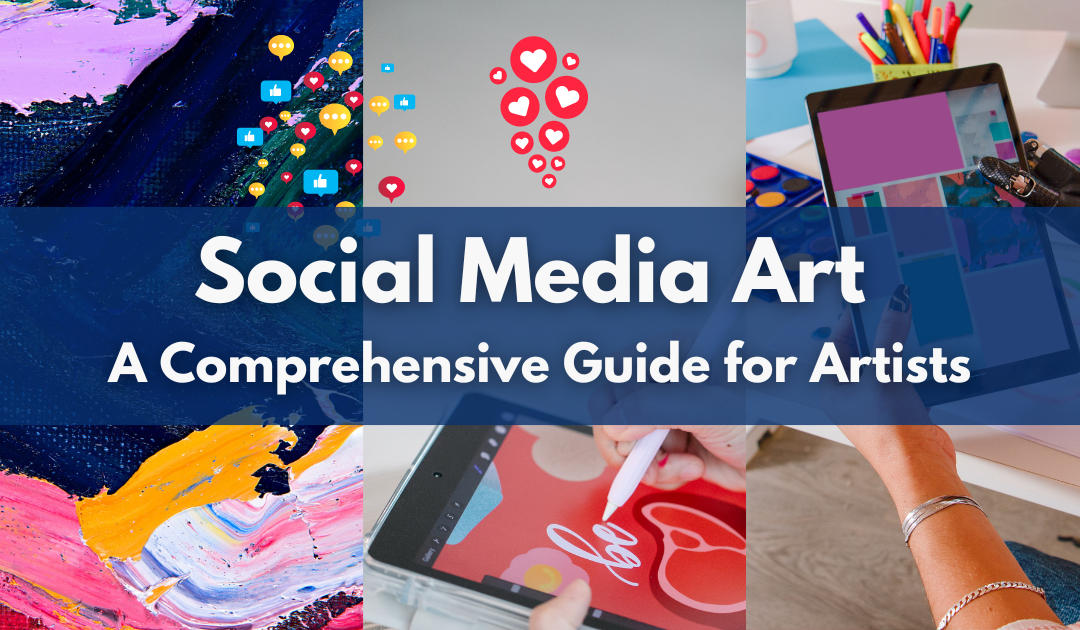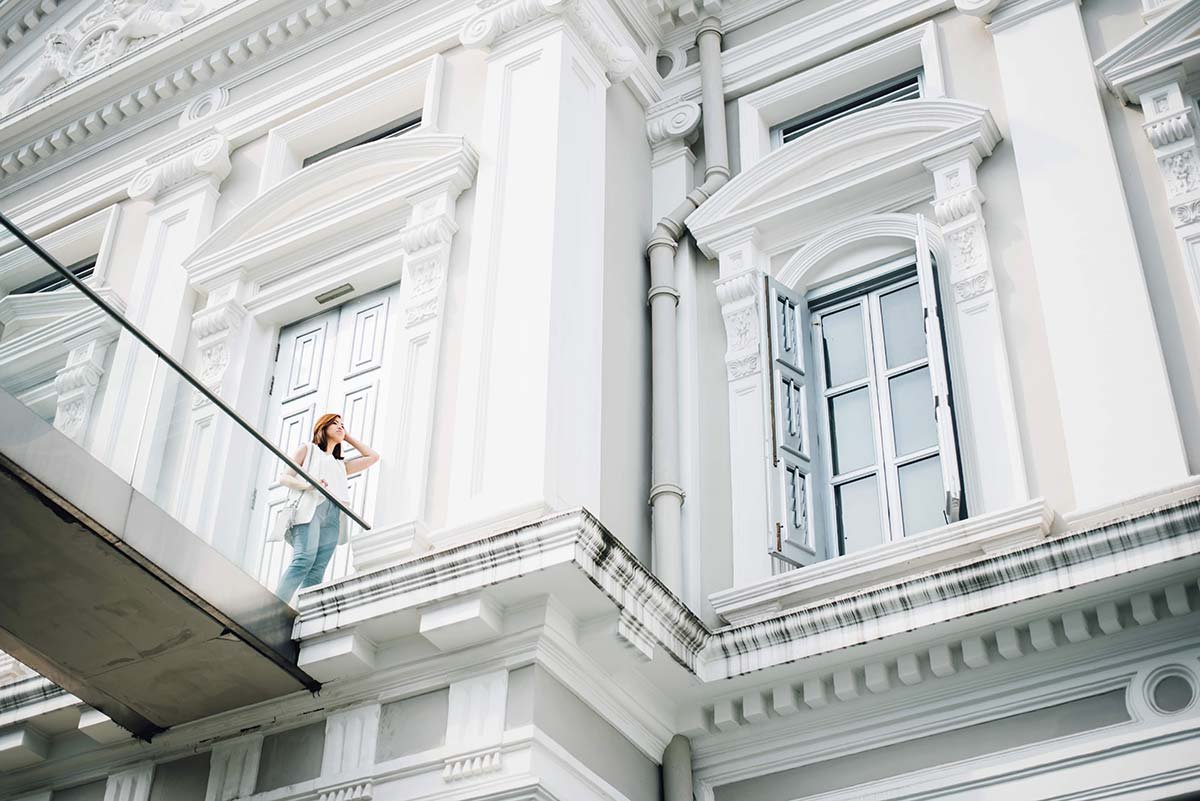Hey there, artists! Do you want to know what are acrylic mediums? Are you ready to dive into the colorful world of acrylic mediums?
We love acrylic mediums, and you should also love them. Understanding acrylic mediums can totally transform your artistic journey.
So, sit with your favorite hot or cold drink, and let’s explore the magic of these versatile materials.
The Power of Acrylic Mediums

Imagine standing in front of your canvas, brush in hand, bursting with creative energy.
But wait! Before you start putting paint on that blank surface, let’s talk about a secret weapon that can take your art to the next level—acrylic mediums!
These nifty little helpers are like the Swiss Army knives of the painting world.
They can change the consistency of your paint, add texture, create shimmering effects, and so much more.
In short, acrylic mediums are the key to unlocking a whole new realm of artistic possibilities.
In this guide, we’ll explore:
- What are acrylic mediums and how they work
- The different types of mediums and their uses
- How to choose the right medium for your project
- Tips and techniques for using mediums like a pro
So, are you ready to supercharge your acrylic painting skills?
Let’s jump in!
Understanding Acrylic Mediums: The Basics
What Are Acrylic Mediums?
Alright, let’s start with the million-dollar question: what are acrylic mediums?
Simply put, acrylic mediums are substances that you mix with acrylic paint to change its properties.
Think of them as magical potions that can transform your paint in all sorts of cool ways!
Acrylic mediums are usually made from the same acrylic polymers as the paint itself, but without the pigment. This means they play nice with your acrylics, blending seamlessly to create all kinds of effects.
Fun Fact: Acrylic paint and mediums were first developed in the 1940s and became popular with artists in the 1960s. Talk about a groovy invention.
The Science Behind Acrylic Mediums
Now, don’t worry – we’re not going to get all Bill Nye the Science Guy here, but understanding a bit about how acrylic mediums work can help you use them more effectively.
Acrylic mediums are like the chameleons of the art world.
They’re made up of tiny plastic particles suspended in water. When you mix them with paint, these particles get cozy with the paint pigments.
As the water evaporates, the particles fuse together, creating a flexible film.
Different mediums have different formulations, which is why they can do such a variety of things:
• Some mediums make your paint thicker or thinner
• Others will change how shiny or matte the finish is
• Special types of mediums even add texture or special effects
The cool thing is, once you understand how mediums work, you can start experimenting and creating your own unique effects.
Types of Acrylic Mediums

What Are the Different Acrylic Mediums?
Okay, now that we’ve got the basics down, let’s meet the stars of the show.
There are several types of acrylic mediums, each with its own superpower:
- Gel Mediums
- Modeling Paste
- Glazing Mediums
- Retarders
- Flow Improvers
- Matte and Gloss Mediums
- Texture Mediums
Each of these mediums has a unique role to play in your artistic toolkit.
Let’s break them down one by one.
Acrylic Mediums Explained
Gel Mediums

Gel mediums are like the muscle-builders of the acrylic world.
They come in different consistencies (light, regular, and heavy) and finishes (glossy or matte).
Here’s what you can do with them:
- Add body to your paint for impasto techniques
- Create transparent layers for depth and dimension
- Extend your paint without losing color intensity
Pro Tip: Mix gel medium with some paint for a translucent glaze that adds depth to your work!
Modeling Paste

Modeling paste is your go-to for adding serious texture to your paintings.
It’s like Play-Doh for grown-ups!
You can:
- Create 3D effects on your canvas
- Build up areas for a relief effect
- Carve into it once it’s dry for unique textures
Fun Fact: Some artists use modeling paste to create entire 3D sculptures on their canvases!
Glazing Mediums

Glazing mediums are all about creating those dreamy, translucent layers that add depth and luminosity to your paintings.
They:
- Thin your paint without losing its adhesive properties
- Allow you to build up subtle color variations
- Create a smooth, even surface for detailed work
Try This: Use a glazing medium to create a “wash” of color over a dry layer for a watercolor-like effect!
Remember: Some glazing mediums contain oil. This glazing medium is incompatible with acrylics, so avoid oil-containing glazing mediums.
Retarders

Ever wish you could slow down time? Well, retarders are the next best thing!
They:
- Slow down the drying time of your acrylics
- Give you more time to blend and work wet-into-wet
- Are great for techniques like sgraffito (scratching into wet paint)
Remember: A little goes a long way with retarders. Too much can prevent your paint from drying properly.
Flow Improvers

Flow improvers are like the yoga instructors of the acrylic world – they help your paint relax and flow more freely.
These mediums:
- Reduce brush marks for a smoother finish
- Are great for detailed work and fine lines
- Can be used to create beautiful “poured” paintings
Flow improvers are also known as Pouring Medium.
Experiment: Try adding a flow improver to your paint for abstract art or fluid painting techniques!
Matte and Gloss Mediums

These mediums are all about that final look.
They can:
- Change the sheen of your paint from matte to glossy (or vice versa)
- Protect your painting from UV light and dust
- Enhance color vibrancy (especially with gloss mediums)
Did you know? You can mix matte and gloss mediums to create a custom satin finish!
Pro Tip: You can also use Matte and Gloss Mediums as additives to paste collage paper on your painting surfaces (paper, canvas, or wood). When they dry, they give a matte or glossy transparent look.
Texture Mediums

Texture mediums are where things get really fun.
These mediums can add all sorts of wild and beautiful textures to your paintings:
- Sand texture for a gritty, beachy feel
- Glass bead gel for a sparkly, dimensional effect
- Crackle medium for an aged, antique look
The possibilities are endless with texture mediums – let your imagination run wild.
Applications of Acrylic Mediums
What Are Acrylic Mediums Used For?
Now that we’ve met our cast of characters, let’s talk about how to put them to work.
Acrylic mediums have a wide range of applications across different painting styles:
- Abstract Art: Use texture mediums and modeling paste to create bold, dimensional pieces
- Realism: Glazing mediums can help you achieve subtle color transitions and fine details
- Mixed Media: Gel mediums are great for collage and incorporating different materials into your work
Here are some specific ways mediums can change your paint’s behavior:
- Thickening: Use gel mediums or modeling paste for impasto techniques
- Thinning: Flow improvers (pouring mediums) or glazing mediums can create wash-like effects
- Glazing: Build up transparent layers for depth and luminosity
- Color Vibrancy: Mixing glass medium with acrylic paints will give an extra boost to color and increase the color vibrancy.
Remember, there’s no “right” way to use mediums – experimentation is key.
What Acrylic Mediums Are Waterproof?
Good news for outdoor art lovers – most acrylic mediums are water-resistant once they’re fully cured.
However, some are more durable than others:
- Gel mediums (especially heavy gel) offer excellent water resistance
- Gloss mediums create a protective, water-resistant film
- Some specialty mediums are specifically formulated for outdoor use
To make your acrylic paintings truly weatherproof:
- Use a waterproof gesso as a base layer
- Apply your paint and mediums as usual
- Finish with a UV-resistant varnish for extra protection

Pro Tip:
- Always check the label to make sure a medium is suitable for outdoor use before applying it to exterior artwork.
- Most of the acrylic mediums create a waterproof transparent film over your paintings. So you can use them to protect your paintings from water damage and longevity.
Acrylic Paint Medium for Fabric
Yes, you can use acrylics on fabric.
Here’s how to turn your acrylic paints into fabric paint:
- Mix your acrylic paint with a fabric medium (about 1:1 ratio)
- Apply to pre-washed, dry fabric
- Let dry completely, then heat-set with an iron
Some tips for fabric painting success:
- Use a soft brush to avoid stiff, crusty paint
- Work in thin layers for best results
- Experiment on scrap fabric first to get a feel for the technique
Fun Project Idea: Try painting a custom design on a plain t-shirt or tote bag.
Selecting the Right Acrylic Mediums
How to Select Acrylic Mediums for Your Art
Choosing the right medium can feel like being a kid in a candy store – so many options.
Here are some factors to consider:
- Desired effect: Do you want to add texture, change the finish, or alter the drying time?
- Surface: Are you painting on canvas, wood, or something else?
- Drying time: Do you need more working time or quick-drying layers?
- Finish: Are you going for glossy, matte, or somewhere in between?
Remember, the best way to find your favorite mediums is to experiment. Try getting a sampler pack of different mediums and play around with them.
What Are Good Mediums for Acrylic Painting?
If you’re just starting out, here are some beginner-friendly mediums to try:
- A basic gel medium (great for extending paint and adding texture)
- A glazing medium (for creating transparent layers)
- A retarder (to give you more working time)
For the more adventurous artists, consider these advanced options:
- Texture pastes or modeling pastes for bold, 3D effects
- Iridescent or interference mediums for unique color shifts
- Crackle mediums for an aged, vintage look
Remember, there’s no “best” medium – it all depends on what you want to achieve.
Acrylic Medium Gloss
Gloss medium is like the superhero of the acrylic world – it can do so much.
Here are some common uses of gloss medium:
- Increasing shine and vibrancy of colors
- Creating a smooth, even surface
- Protecting your painting from dust and UV light
- Acting as an adhesive for collage and mixed media
Gloss vs. Matte: Which to choose?
- Gloss: Great for bright, vibrant works and smooth surfaces
- Matte: Perfect for subtle, understated pieces or textured works
Pro Tip: Mix gloss and matte mediums to create custom finishes.
Practical Tips and Techniques
What Does Acrylic Medium Do?
Let’s recap the magic of acrylic mediums:
- They can change the consistency of your paint
- Alter the finish from matte to glossy
- Add texture and dimension to your work
- Extend drying time for blending techniques
- Create special effects like crackling or iridescence
In short, acrylic mediums are the secret sauce that can take your paintings from “meh” to “WoW”.
Difference between Acrylic Medium and Additives
While they might seem similar, acrylic mediums and additives are different beasts:
Acrylic Mediums
- Made from the same acrylic polymers as the paint
- Can be used on their own or mixed with paint
- Maintain the integrity and durability of the paint
Additives
- Often made from different materials (like silicone or alcohol)
- Used in small amounts to create specific effects
- May affect the long-term stability of the paint
In general, stick to mediums for most applications, and use additives sparingly for special effects.
How to Mix and Apply Acrylic Mediums
Ready to get mixing? Here’s a quick guide:
- Start with a small amount of medium
- Mix thoroughly with your paint using a palette knife or brush
- Adjust the ratio until you get the desired consistency
- Apply with a brush, palette knife, or other tool
Some fun techniques to try:
- Impasto: Use heavy gel medium for thick, textured strokes
- Glazing: Apply thin layers of paint mixed with glazing medium
- Pouring: Mix flow improver with paint for fluid art techniques

Remember, practice makes perfect! Don’t be afraid to experiment and make beautiful messes.
Safety and Maintenance
Let’s keep it safe and clean.
Safety Tips
- Work in a well-ventilated area
- Wear gloves if you have sensitive skin
- Keep mediums out of reach of children and pets
Brush Care
- Clean brushes immediately after use
- Use soap and water for wet paint, or brush cleaner for dried paint
- Reshape brushes and store them bristle-up to dry
Proper Storage
- Keep mediums in a cool, dry place
- Seal containers tightly to prevent drying out
- Label your mixtures so you remember what’s what!
Conclusion: Your Acrylic Adventure Awaits!
Summary of Key Points
Whew! We’ve covered a lot of ground, haven’t we?
Let’s recap the main points:
- Acrylic mediums are versatile substances that can change the properties of your paint
- There are many types of mediums, each with unique effects
- Choosing the right medium depends on your desired outcome and technique
- Experimenting is key to finding your favorite mediums and effects
Remember, there’s no “right” or “wrong” way to use mediums – it’s all about what works for you and your art.
Final Thoughts for Artists
As you start your acrylic medium adventure, remember that art is all about exploration and self-expression.
These mediums are tools to help you bring your vision to life, so don’t be afraid to push boundaries and try new things.
Whether you’re creating bold, textured abstracts or delicate, luminous landscapes, acrylic mediums can help you achieve effects you never thought possible.
So go ahead, experiment, and most importantly, have fun!
Resources and Further Reading
Want to dive deeper into the world of acrylic mediums? Check out these resources:
Books
• “Acrylic Revolution” by Nancy Reyner
• “The Acrylic Painter’s Book of Styles and Techniques” by Rachel Rubin Wolf
Online Courses
• Skillshare: “Acrylic Painting: Learn the Basics for Beginners” by Rich Goyette
• Udemy: “Acrylic Painting: Mediums and Techniques” by Libby Byrne
Shopping
Check Blick for your Art Supplies
Remember, the best teacher is “Experience”, so grab some mediums and start playing.
FAQ: Your Burning Questions Answered.
Q: Can I use acrylic mediums with other types of paint?
A: Acrylic mediums are designed to work best with acrylic paints. While some can be used with other water-based media, for optimal results, stick to acrylics.
Q: How long do acrylic mediums take to dry?
A: Drying time varies depending on the medium, but most dry within 15-30 minutes. Thicker applications or retarding mediums can extend this time. Always check the product label for drying times.
Q: Are acrylic mediums toxic?
A: Most acrylic mediums are non-toxic when used as directed. However, it is always best to work in a well-ventilated area and avoid ingestion or prolonged skin contact.
Q: Can I mix different acrylic mediums together?
A: Yes! Mixing mediums can create unique effects. Just be sure to test combinations on a small scale first to ensure compatibility.
Q: Do I need to varnish my painting if I’ve used acrylic mediums?
A: While many mediums offer some protection, a final varnish can provide additional UV protection and a consistent finish across your piece.
Q: How do I know how much medium to use?
A: Start with a 1:1 ratio of paint to medium and adjust from there. Remember, you can always add more, but you can’t take it away once mixed!
Q: Can acrylic mediums be used on their own without paint?
A: Absolutely! Many artists use clear mediums for collage, as a sealant, or to create interesting textures without color.
Q: Will using mediums affect the longevity of my painting?
A: When used correctly, acrylic mediums can actually enhance the durability of your work. They can improve adhesion, flexibility, and resistance to environmental factors.
Q: How should I store my acrylic mediums?
A: Store them in a cool, dry place with lids tightly sealed. Avoid freezing temperatures, and keep them out of direct sunlight.
Q: Can I use acrylic mediums for outdoor art projects?
A: Some mediums are suitable for outdoor use, but always check the label. Use mediums specifically formulated for exterior applications and seal with an outdoor varnish for best results.
Remember, these are general answers.
Always check the product instructions for the most accurate information about each medium you use.
Happy creating!







